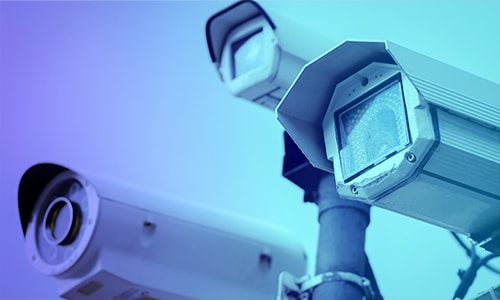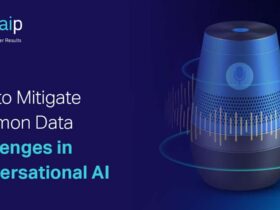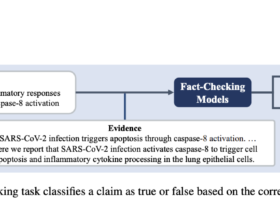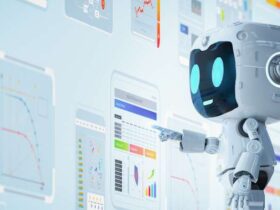AI In Emotion Recognition – Top Use Cases
The ability of machines to understand our underlying emotions can pave the way for breakthroughs that can elevate human life and lifestyle. Let’s look at some of the most beneficial use cases of this technology.
Understand Emotional Wellbeing
One of the most plaguing concerns globally is mental health. Statistics reveal that in India, around 45 million people suffer from anxiety. Besides, 10.6% of adults in India suffer from a mental disorder.
Stemming from stress, lifestyle choices, work, loneliness, and more, mental health is a rising concern resulting in physical complications as well. An AI model that can assist therapists and counselors in understanding an individual’s deeper state of mind can foster personalized treatment plans and ultimately offer better healing. Such a model is incredibly helpful in:
- Conducting mental health assessments
- Pain management and treating PTSD concerns
- Diagnosing Autism Spectrum Disorders and more
Learner Engagement In EdTech

 Smart classrooms are being increasingly deployed in schools across India. By integrating emotion recognition models, institutions and stakeholders can further help in:
Smart classrooms are being increasingly deployed in schools across India. By integrating emotion recognition models, institutions and stakeholders can further help in:
- Student engagement and involvement to help educators revisit teaching methodologies
- Formulating personalized learning experiences
- Detecting cases of bullying and other forms of emotional distress and more
Gaming & Entertainment

 The scope of AI emotion recognition in gaming and entertainment is phenomenal as this technology can help game developers to better understand and replicate human emotions and the expression of their characters. Such incorporations also allow for an immersive gaming experience for players.
The scope of AI emotion recognition in gaming and entertainment is phenomenal as this technology can help game developers to better understand and replicate human emotions and the expression of their characters. Such incorporations also allow for an immersive gaming experience for players.
Security & Surveillance

 Countries like China are already deploying facial recognition cameras to detect jaywalkers and penalize them. With a model to detect emotions, such systems can be used to strengthen security and surveillance in sensitive areas such as airports, railway stations, cinema halls, healthcare centers, and more.
Countries like China are already deploying facial recognition cameras to detect jaywalkers and penalize them. With a model to detect emotions, such systems can be used to strengthen security and surveillance in sensitive areas such as airports, railway stations, cinema halls, healthcare centers, and more.
AI models can accurately detect suspicious emotions and anomalies in human expressions, enabling security professionals to track and triage suspects and better monitor them.
How Does AI Emotion Recognition Work
The process of training AI models to detect human emotions is complicated yet systematic. While the approach depends on individual projects, there is a general framework that can be drafted as a reference. Below is the general sequence:
- It starts with the collection of data, where bulk volumes of human expressions and faces are compiled. Brands like Shaip ensure ethical sourcing of human data.
- Once the datasets are collected, they are annotated using bounding box methods to isolate human faces for machines to understand.
- With the faces detected image datasets go through a sequence of pre-processing, which optimizes the photo to be fed for machine learning. This stage involves image correction techniques such as noise reduction, red eye removal, brightness and contrast corrections, and more.
- Once the images are machine-ready, they are fed into emotional classifiers that are based on Convoluted Neural Networks models.
- The models process the images and classify them based on their expressions.
- The models are trained over and over again for performance optimization.
Acknowledging The Challenges In AI Emotion Recognition
As humans, we often struggle to understand what the person next to us is going through. For a machine, this process is tougher and more complicated. Some of the predominant challenges in this space include:
- The range of human emotions makes it difficult for machines to pick up the right expression. Sometimes, human emotions are nuanced. For instance, the way an introvert smiles from how an extrovert does is completely different. Machines often struggle to pick up the differences though both of them might be genuinely happy.
- There are always cultural differences and biases in detecting human faces and their myriad of emotions. Expressions and their ways can be different in different regions and models find it difficult to understand such nuances.
The Way Forward
As we progress fast towards Artificial General Intelligence, we must strengthen the communication between machines and humans. Computer vision, specifically, emotion recognition is a crucial part of this journey.
While there are challenges, breakthroughs are assured. If you’re developing a model to detect human emotions and are looking for massive volumes of datasets to train your models, we recommend getting in touch with us.
Our human-in-the-loop quality assurance processes, ethical sourcing methodologies, and airtight annotation techniques will ensure your AI visions are achieved faster. Get in touch with us today.












